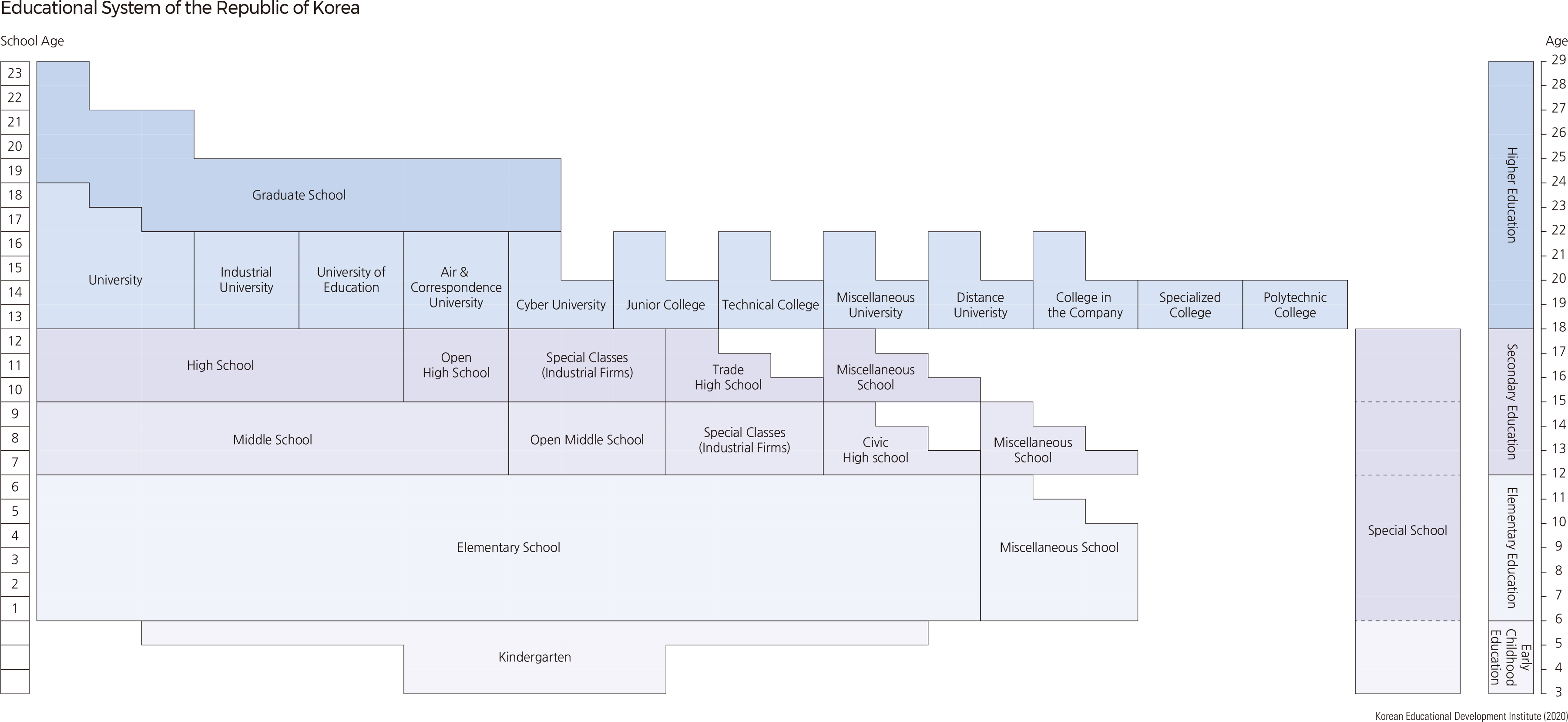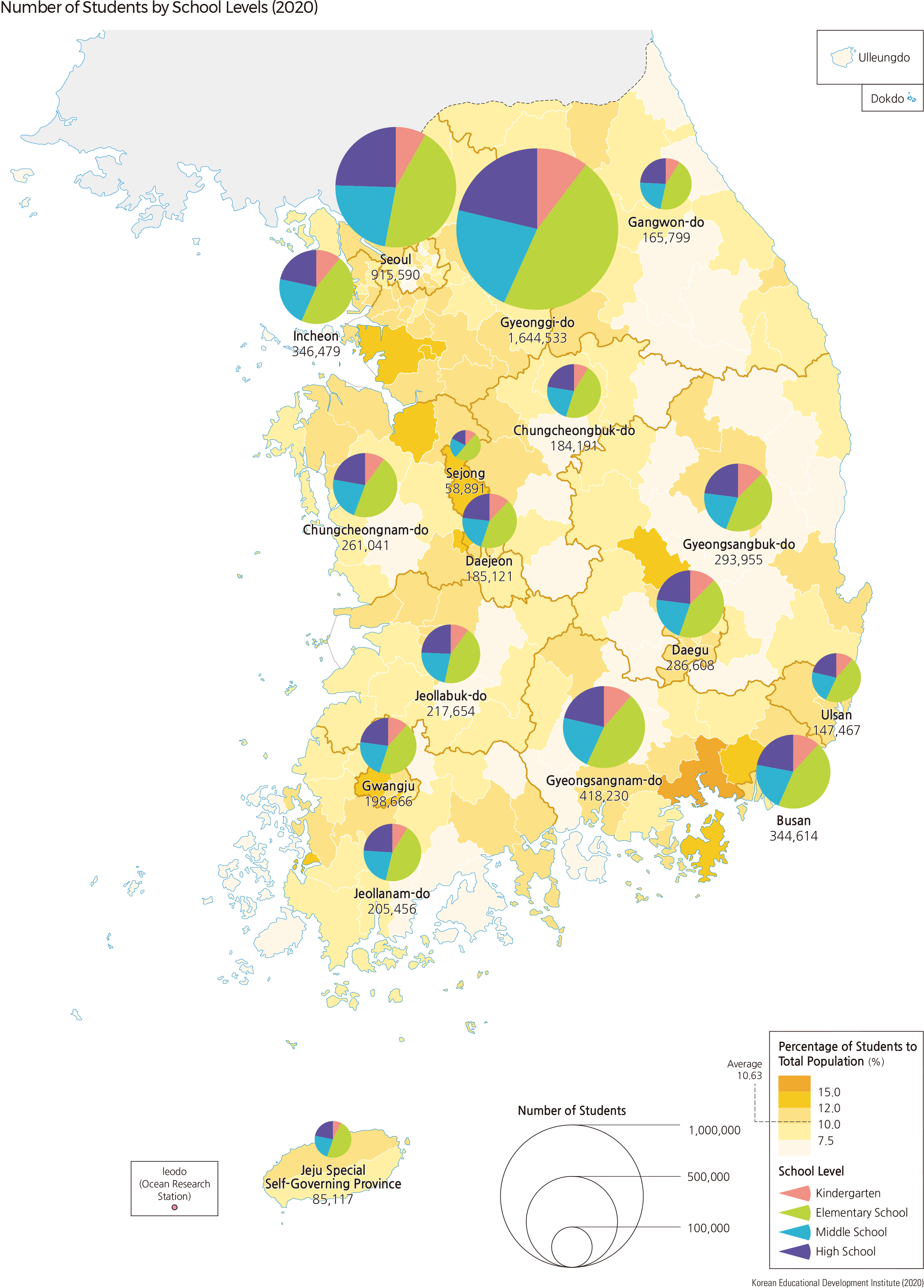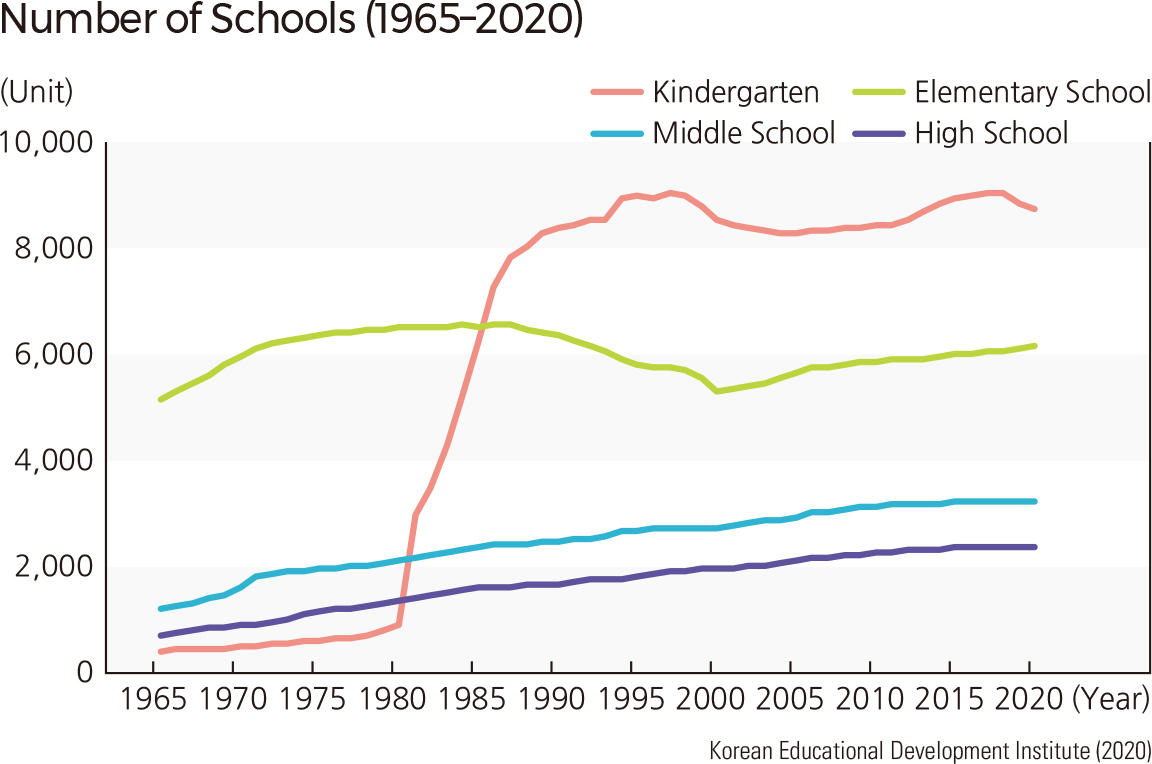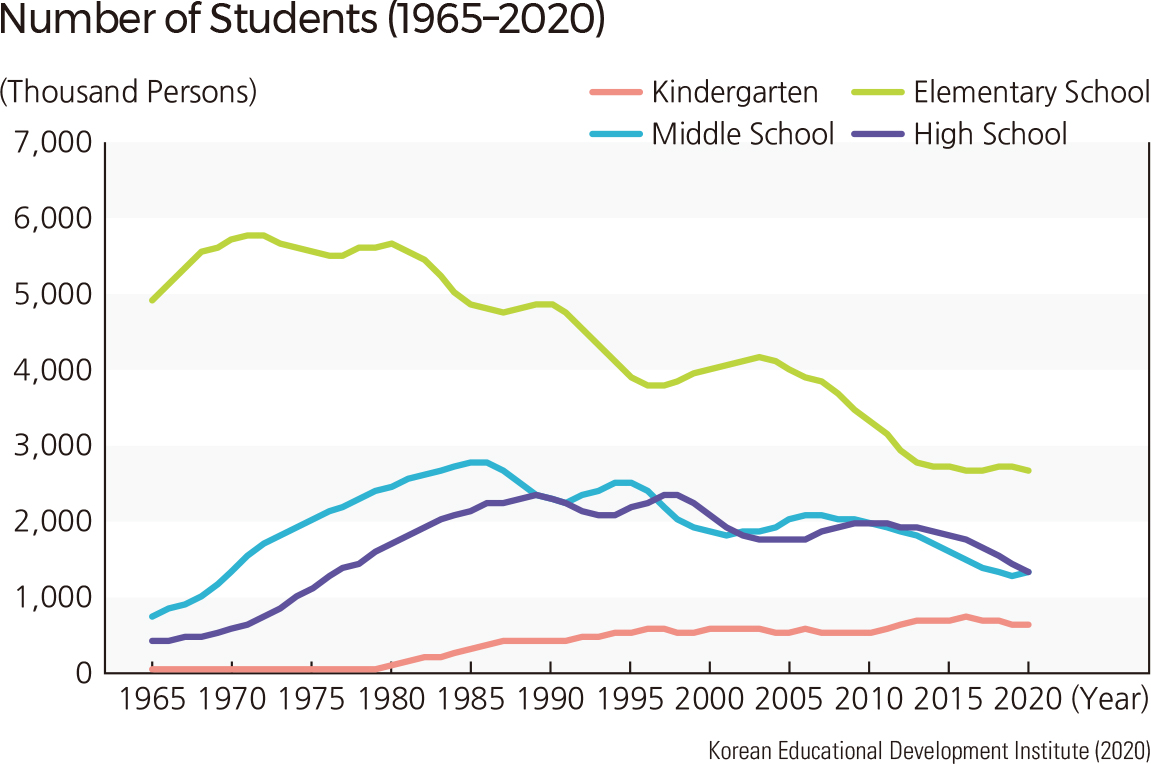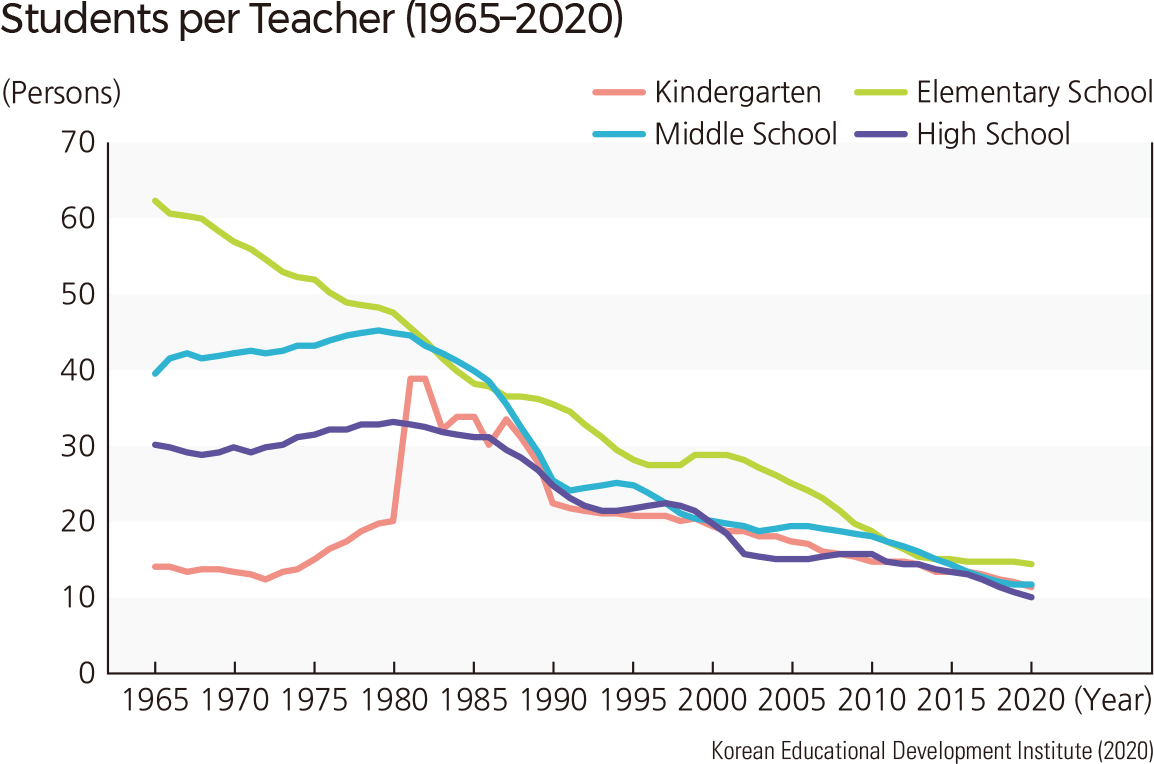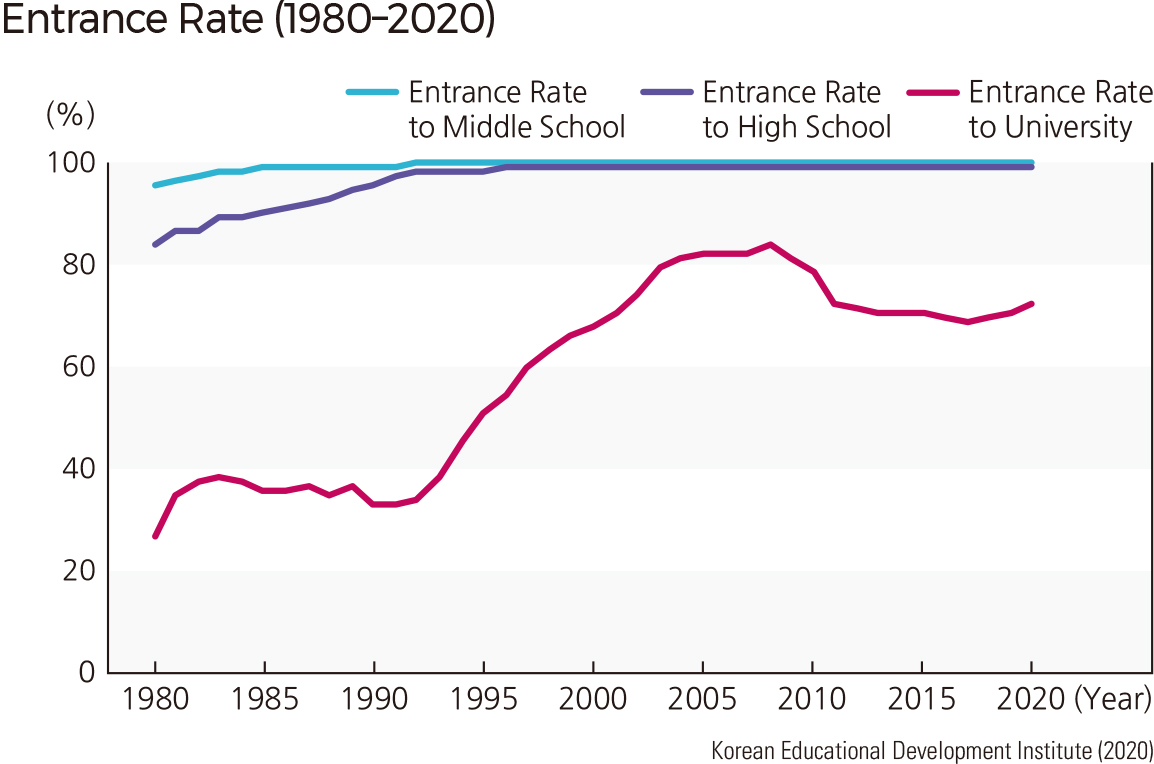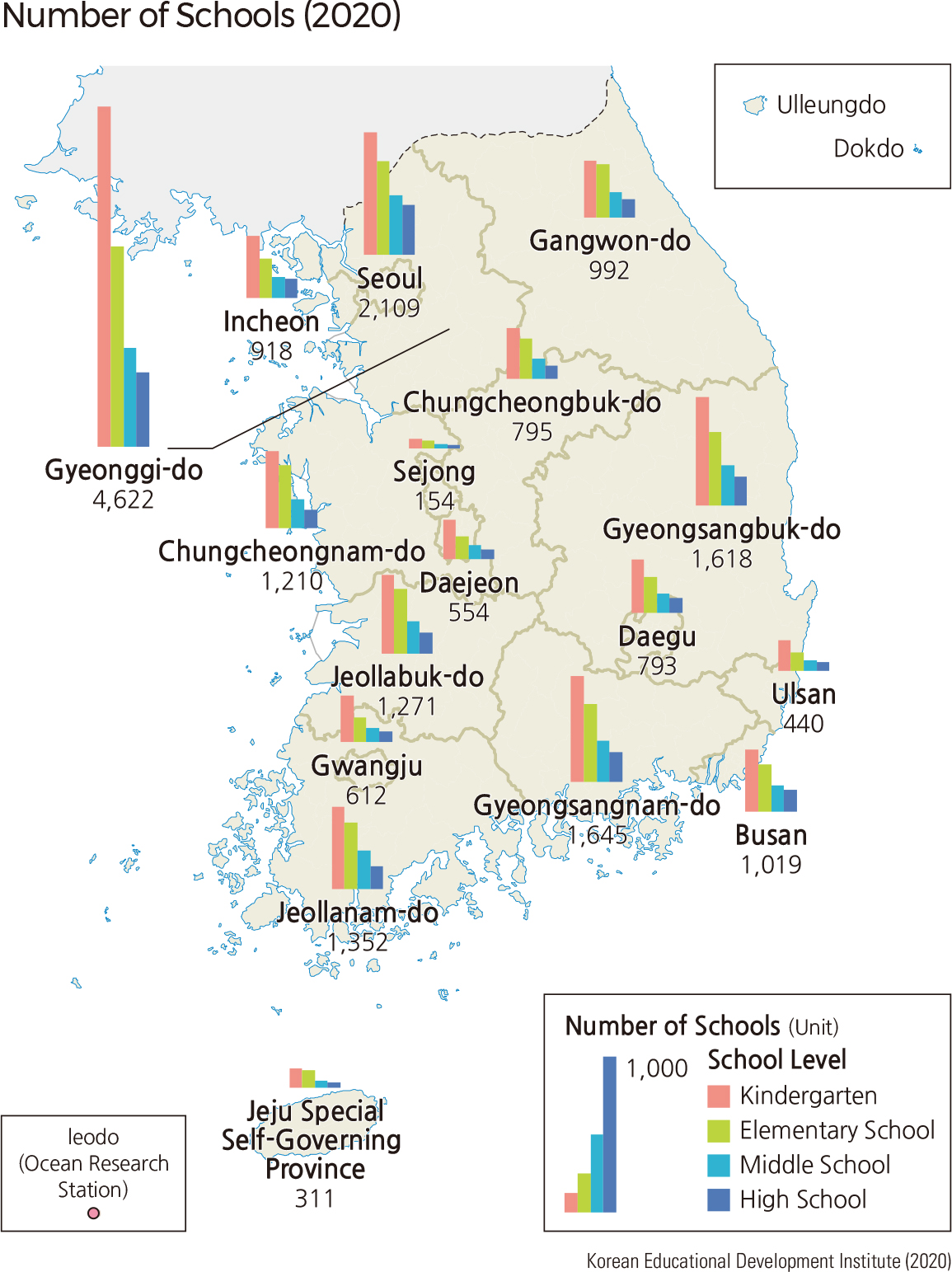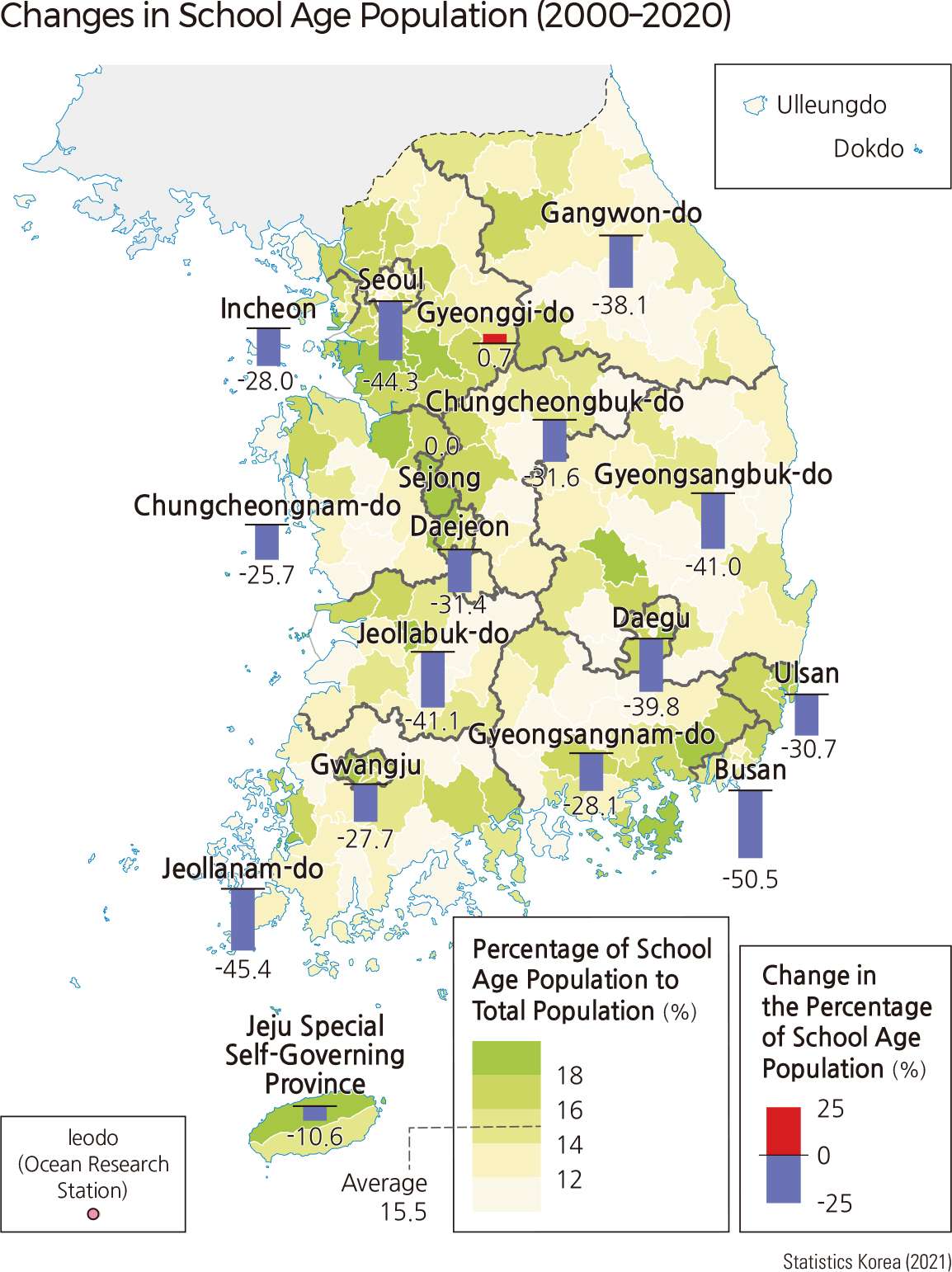English III 2021
Education has become the most important interest and concern for modern Koreans. Education is closely related to all aspects of society at all levels, such as family planning, population structure, household expenditure, residence selection, and city planning. In addition, a high level of enthusiasm for education and a high level of educational spending, including private education expenditures, are noticeable characteristics of Korean society. Like many countries where modern education begins at the birth of the nation-state, Korean education has undergone significant changes through its modernization process. The Korean school system is comprised of elementary education for kindergarten and elementary school, secondary education for middle and high school, and higher education for college and related levels. Most Koreans acquire at least six years of elementary education and another six years of secondary education. The proportion entering higher education institutions, including college, is among the highest in the world.
Each education level is offered by various educational institutions. Elementary and secondary education is provided by public educational institutions established by the state, along with a variety of private educational institutions. Various schools have been established for special purposes in accordance with the characteristics of students. At the high school level, more choices such as college prep, vocational, and technical high schools are available. Higher education is based on four-year universities and two-year community colleges. There are also technical colleges covering various professions. Recently, online and extension colleges and degree programs have been developed. Many graduate schools offer master’s and doctoral degrees, and many students pursue graduate study abroad. The middle school entrance rate is nearly 100% and has been since the late 1980s, and the high school entrance rate has been close to 100% since the mid-1990s. The number of schools has been consistently increasing, but many elementary and middle schools were closed in areas of population decrease after the 1990s. Kindergarten enrollment has significantly increased since the 1980s as kindergarten education has become more widely available. The total number of students differs by age group, with the number of elementary students decreasing steadily due to shrinking fertility rates. A declining fertility rate has also resulted in a decrease in the middle and high school populations since the late 1980s. As a benefit, an increase in teacher hirings has reduced the number of students per teacher. Changes in the school-age population vary greatly by region. Gyeonggi-do has experienced an increase in its school-age population, while other regions show large decreases from 2000 to 2020.
|
